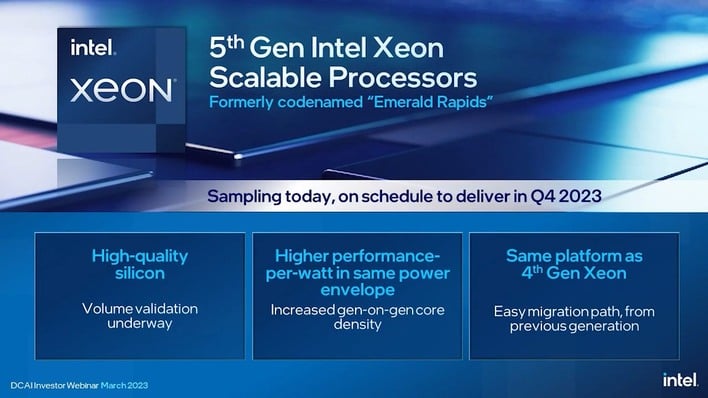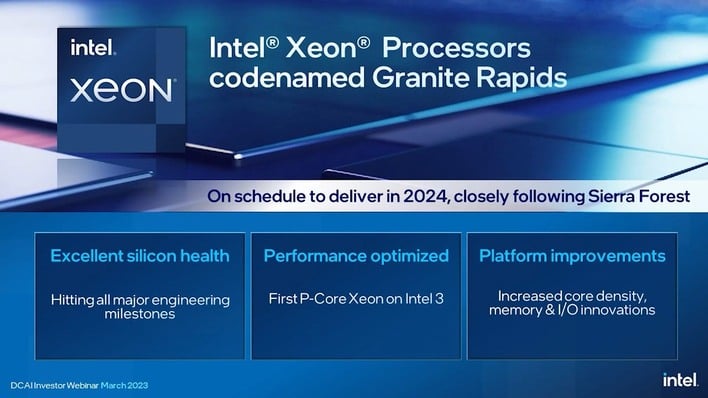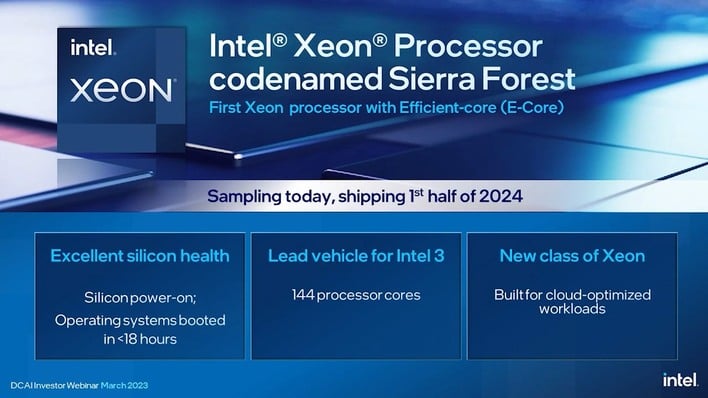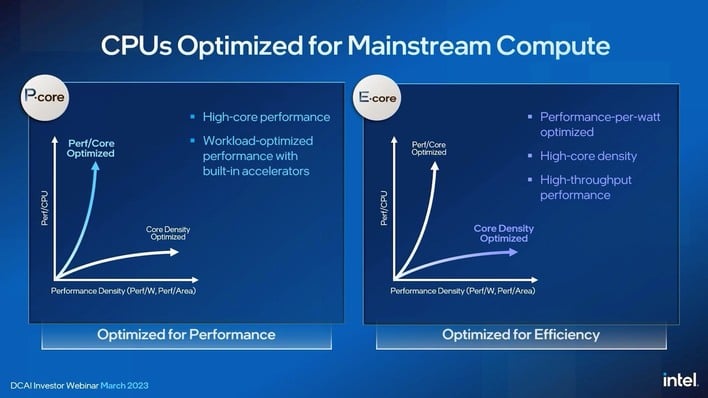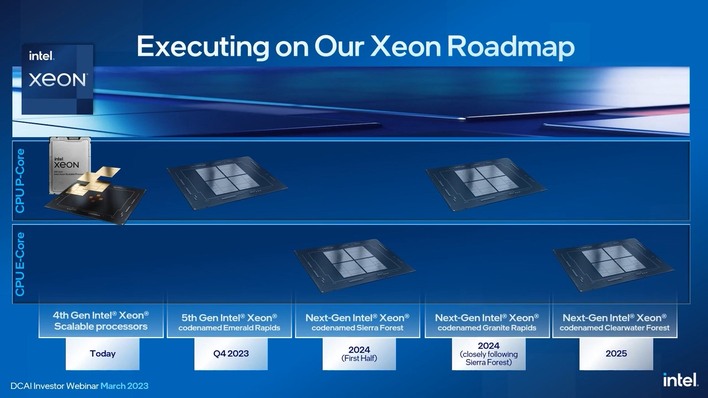Intel Xeon Roadmap Update Teases 144-Core Sierra Forest CPU Built On A Cutting-Edge Node
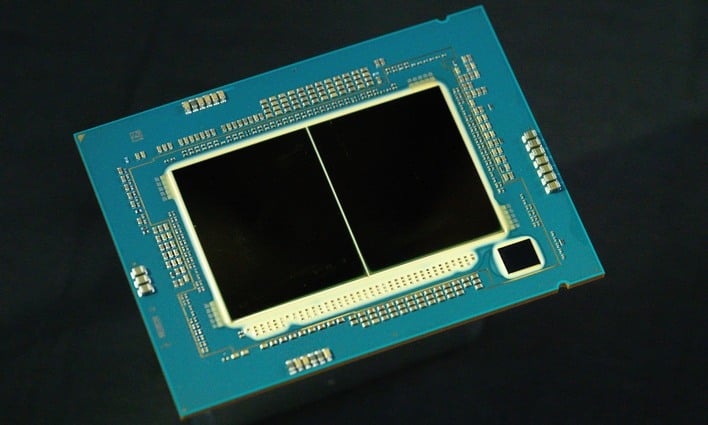
We're at the end of a quarter, and you know what that means: investor meetings. Intel held a Data Center and AI Investor Webinar today, and along with the usual boring money talk, revealed a few key details about its upcoming Xeon products. Those include the E-core-only Sierra Forest and Clearwater Forest CPUs as well as the more conventional P-core-based Emerald Rapids and the future Granite Rapids.
The processor in the top image is an Emerald Rapids early sample.
We'll talk about the latter parts first. The 5th-gen Xeon Scalable parts known as Emerald Rapids will mostly be a refresh of Sapphire Rapids, and they're coming late this year. They'll slot into the same sockets, but Intel says that the refreshed chips will offer improved performance, power-efficiency, and core counts over the extant 4th-gen Xeon chips.
Meanwhile, Granite Rapids will be Intel's next performance Xeon platform. These will be fabricated on Intel's 'Intel 3' process, which will apparently be a significant improvement over not only the Intel 7 process used in Sapphire Rapids but also the company's bleeding-edge Intel 4 process that will be used for Meteor Lake.
Intel demoed an early Granite Rapids system achieving over 1.5 TB/sec of system memory bandwidth using DDR5-8800 Multiplexer Combined Rank DRAM (MCR-DRAM), a new type of bandwidth-optimized memory. Those chips are expected to arrive some time in 2024, not long after Sierra Forest shows up.
So about Sierra Forest: these will be Intel's next-generation E-core-based Xeons delivering 144 cores per socket. We say next-generation because Intel's done this sort of thing before—remember Knight's Landing? Sierra Forest is a whole other can of worms, though. These chips will go into the enormous LGA 7529 socket, and while 144 cores is far fewer than was rumored—rumors went as high as 512 cores per socket—this is only the first generation of this technology, too.
At the webinar, Intel revealed for the first time the name of the planned successor to Sierra Forest, known as Clearwater Forest. Sierra Forest will be built on Intel 3, just like Granite Rapids, but Clearwater Forest is apparently going to skip the 20A (or "2nm") node and go straight for Intel's 18A node. The company, especially CEO Pat Gelsinger, has been very bullish on the future of its foundry services, and this move also demonstrates considerable confidence there in light of the fact that these chips are "on schedule" for 2025.
Both of these families will use the same sort of small cores that you find in Alder Lake and Raptor Lake as "efficiency" cores. This does mean that they'll offer significantly slashed single-core performance compared to even Sapphire Rapids—to say nothing of Emerald Rapids, which will be available when Sierra Forest comes out. However, a multitude of mini cores could still be very useful for a lot of server tasks, whether that means multi-threaded integer compute or servicing millions of tiny requests in a timely fashion.
Notably, Sierra Forest and Granite Rapids will slot into the same sockets. It's not known whether you'll be able to slap both sorts of CPUs down into the same system, but both are tile-based processors using a common I/O die, so they'll be able to share system firmware as well as other surrounding support hardware and software. Given that, we'd expect mixed systems are possible, delivering on the original promise of Intel's ill-fated Xeon Phi products.
Of course, the same is true of AMD's EYPC Genoa and upcoming Bergamo processors, too. Bergamo tops out at 128 cores, but unlike Intel's Sierra Forest, these cores have fundamentally the same feature set and capabilities as the full-fat Zen 4 cores on EPYC Genoa, they're just thought to be missing half of their L3 cache and run at lower clocks. They're also expected to support simultaneous multi-threading, where Sierra Forest probably won't—although, again, this is not verified by Intel yet. In any case, the matchup early next year should be quite interesting indeed.

